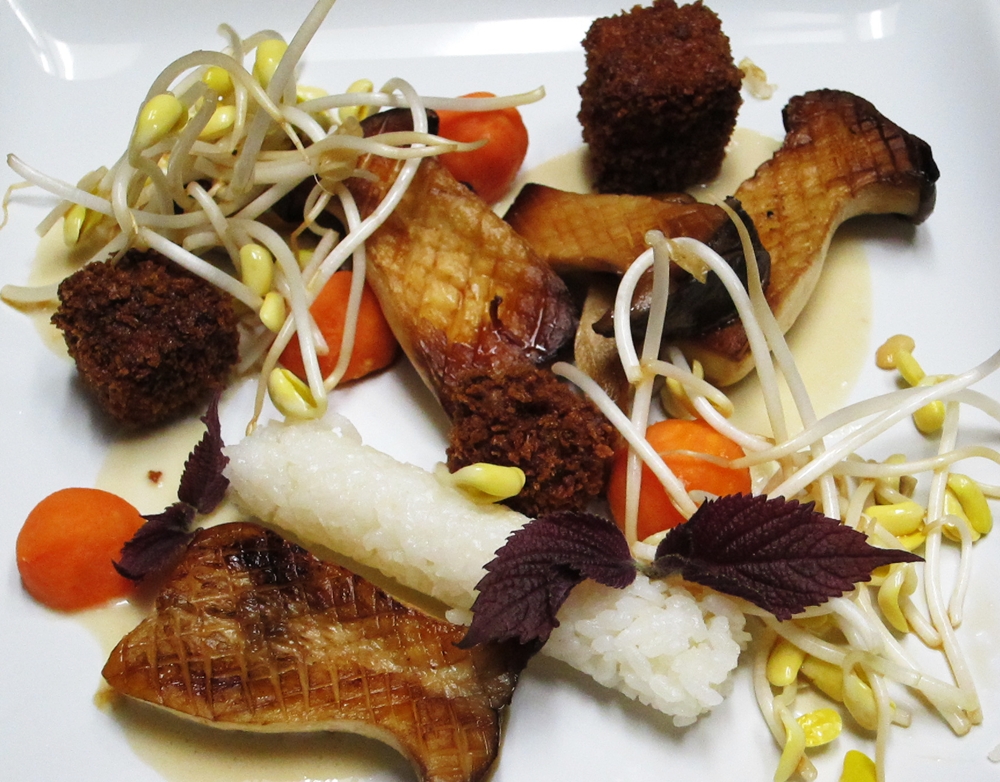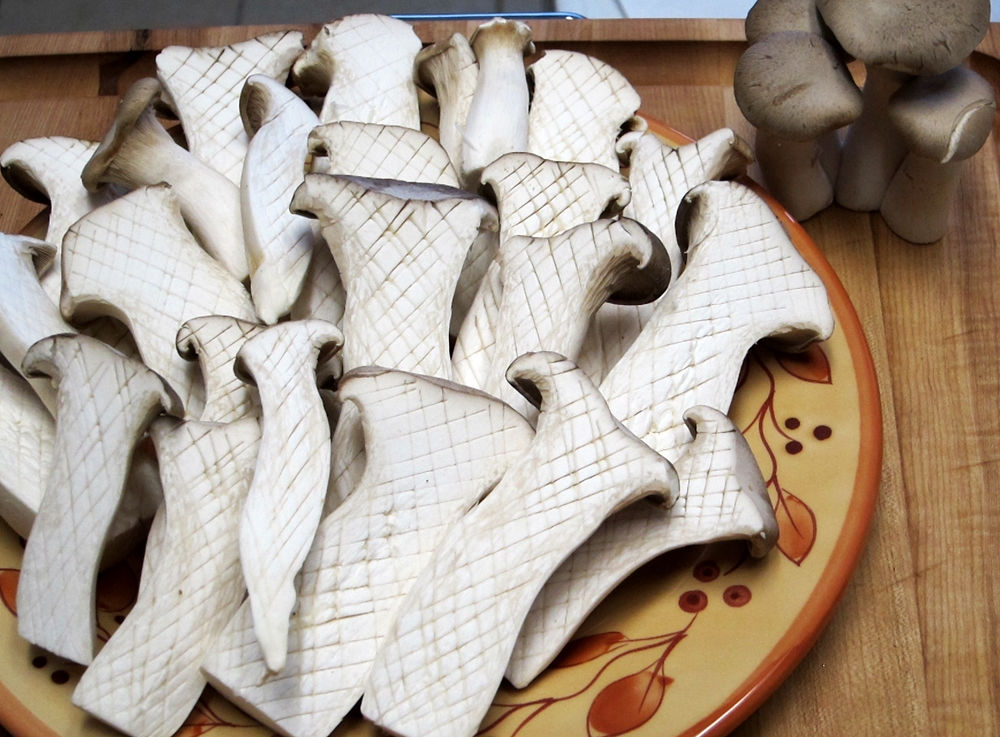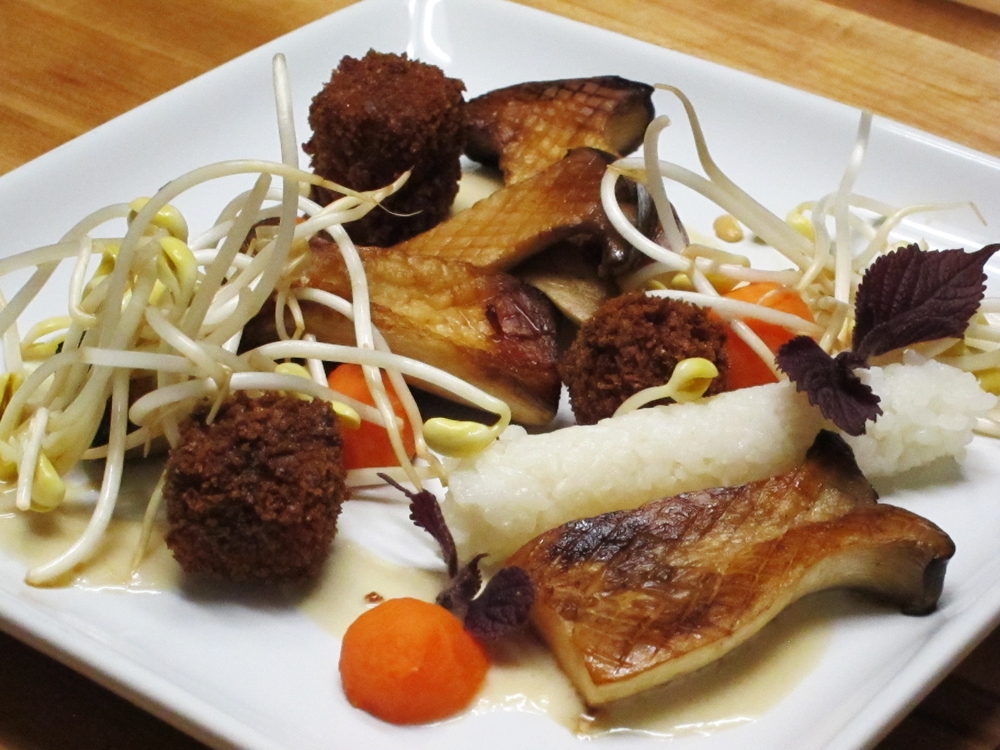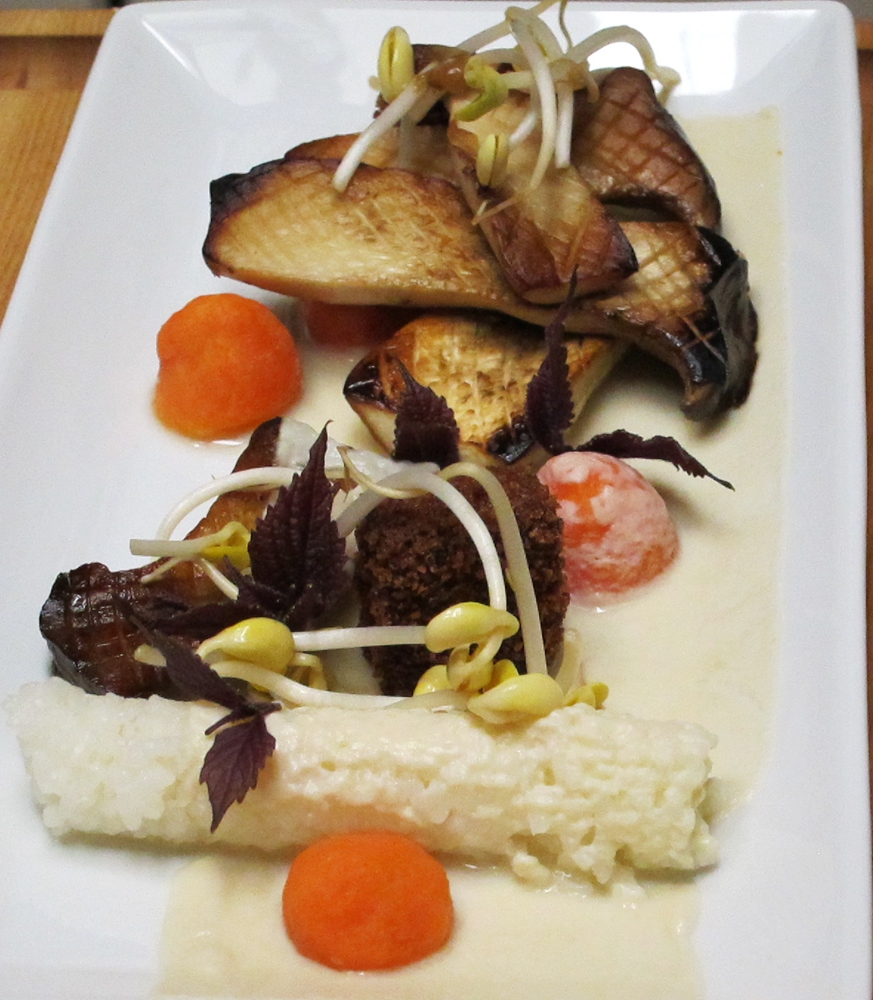I was picking up some ingredients for another dinner of Ramen the other day and stumbled on these awesome looking King Trumpet mushrooms. They looked fresh and plump, so I picked a few clusters up. The first thing that came to mind is to treat them as if they were the more prestigious Porcini or Matsutake mushrooms. When cooked like this these trumpets so resemble the texture of scallops and have an earthy mild flavor. I sliced each mushroom in half and slashed it in a corss-hatch pattern. These were then marinated in Ponzu sauce while I prepared the rest of the dish. Right before serving, I pan fried them in garlic flavored oil and re-seasoned with Ponzu.
The miso sauce was pretty simple. It consisted of soy milk, dashi (prepared following Cooking Issues method: 10g/L Kombu/water, circulated for 1 hr at 65C) white miso, pickled ginger and was set with a little Gellan F to give a good texture. It was very tasty and I could see a soup made from those ingredients and maybe garnished with mushrooms. I had seen in the Alinea cookbook a technique that makes a “sheet sauce”. Basically a sauce is gelled with gelatin or gellan and frozen. It is then cut into rectangles (or any other shape as appropriate) and then it is placed on top of the food at service. The sauce then comes to room temperature and coats the food item in an even layer. The effect is both functional (an even layer of sauce) and aesthetically beautiful. Here is a post of this technique by one of the chefs at Alinea on the Alinea-Mosaic site. You can also see a couple of examples on Alineaphile’s blog here and here. I wanted to give this technique a shot with this dish, but did not want to risk it completely not working. So I divided the sauce up into two. One got the freezing on acetate treatment and the other sat in a bowl in the fridge. I’m glad I did that. The sheet sauce kind of worked but it is not nearly as successful as I had hoped. I think it needed to be thicker to work better.
For the tofu, I made my own bean curd and cut it into cubes. I seasoned them with chinese 10-spice powder and breaded them (egg wash, flour, crumbs) with Panko bread crumbs before frying them till nice and crispy. I wanted to add some color to the dish and that’s where the orange sweet potato balls came in. I cooked them Sous Vide with a few tablespoons of pickled ginger juice. They tasted fantastic and looked really nice on the plate.
The rice is regular sushi rice seasoned with rice wine vinegar and sugar. Cooking it in more dashi as opposed to water gave it a deep and rich flavor. To make it into a cylinder I extruded it through an oiled cannoli mold. The garnishes were soy bean sprouts (much more falvorful, substantial and have a better texture than mung bean sprouts I think) that were seasoned with rice wine vinegar and a touch of salt. The purple leaves are some sort of basil I think. They have a good sharp mint/basil flavor. I picked them up at the Asian grocery store as well and they had no label, but worked well in the dish and added a good color.
Here are a couple of shots of the dish plated with the “sheet sauce”. Notice how it kind of breaks a bit as opposed to staying intact and enveloping everything. I think a touch more gelling agent and making the sheet a bit thicker will help a lot. Overall this dish was fantastic, a really refined, delicious and wonderful looking vegetarian main course.





Wow, all of your foods look so excellent and intriguing. It looks delicious. I like reading your food descriptions since you get in depth. Cool.
Thanks for the kind comments.
Looks good, but it seems like the sauce sheet technique is kinda wasted if you use a mostly colorless base.
When you say you extruded the rice, how did you do that? I recently tried to make a cylinder out of bamboo rice and failed miserably, so I’m very curious.
BTW, the basil looks like opal basil.
Thanks for identifying the herb. I’ve had it before when I get Pho soup or other Vietnamese items. Of course it is always identified as “mint” by the service staff. Apparently to them it’s all “mint”.
I was hoping the sheet sauce will be closer in color to brown due to the miso. Even in white I think it would’ve looked good if it had worked out.
For the rice cylinder I sprayed cannoli tube with PAM and wiped it. Then I used a small wooden dowel to first quickly fill the mold (standing upright on a cutting board) and then to push it through directly on the plates. Hope this helps.